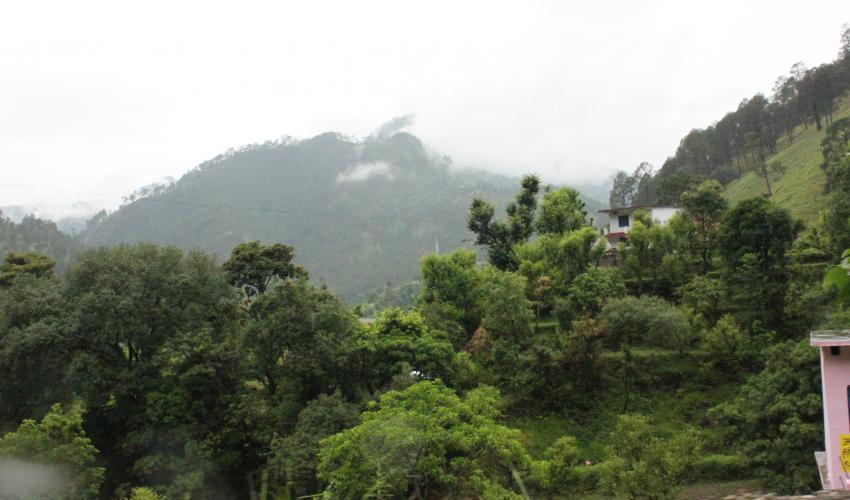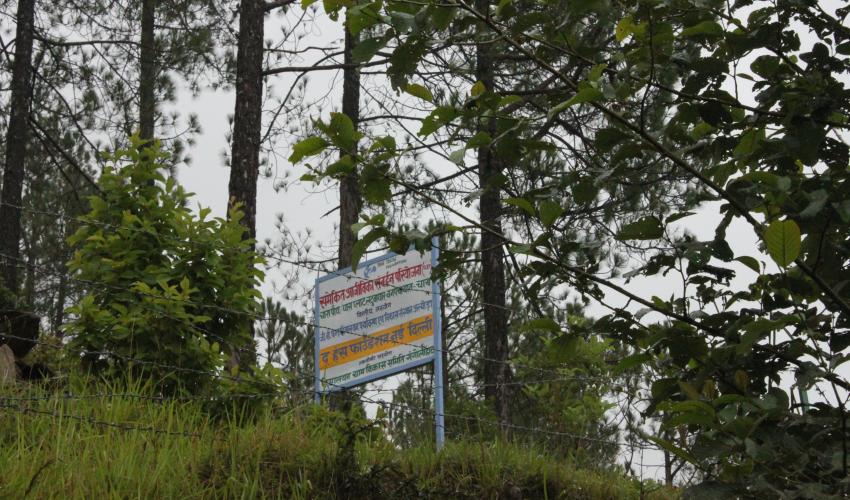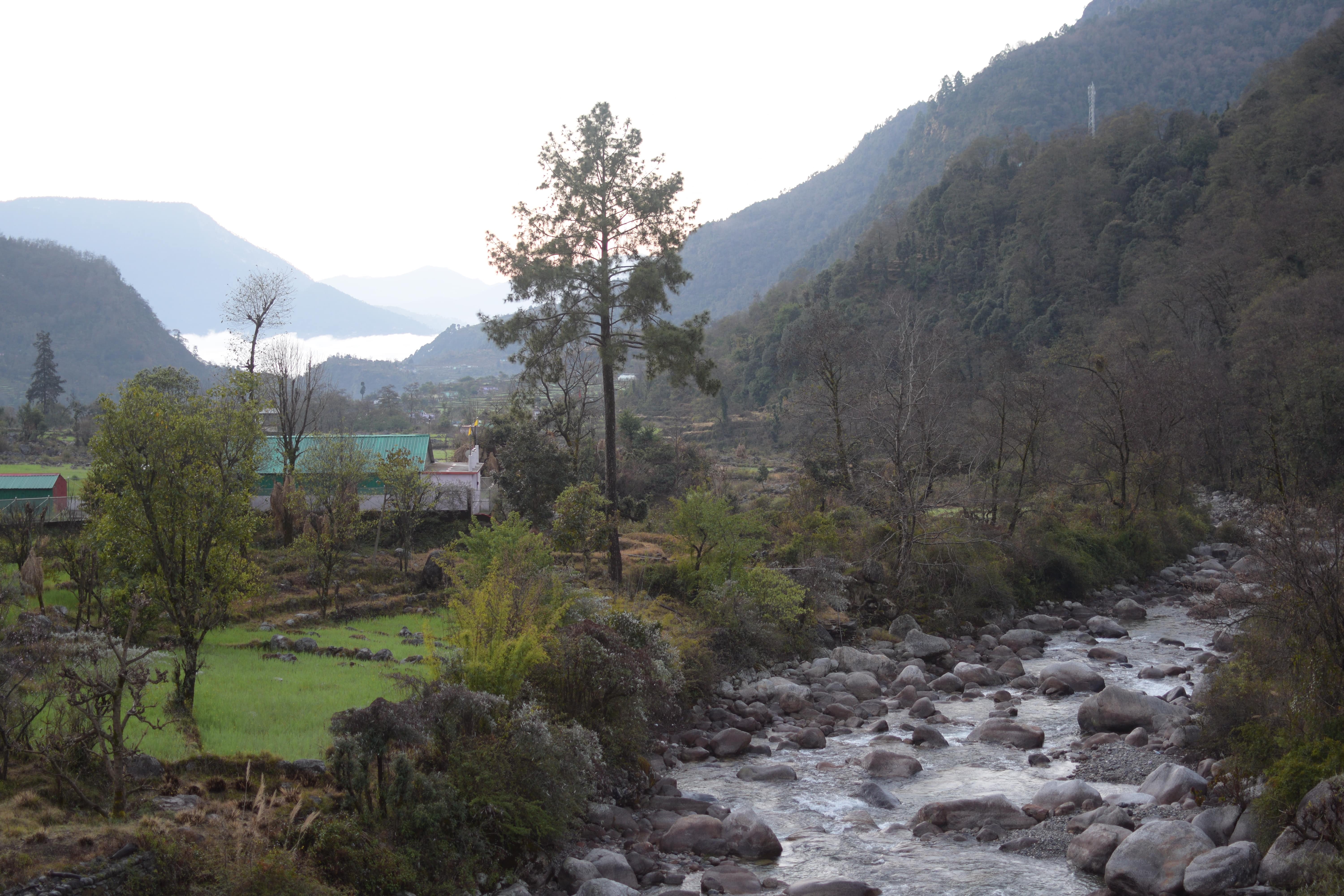Blog: Restoring forests for the future of Himalayan mountain communities
Driving along the winding hill roads of the Indian state of Uttarakhand from Dehra Dun to Pithoragarh, one cannot fail to be impressed by the magnificent Himalayan scenery. The forests and mountains of the Himalayas have been tremendous assets to Uttarakhand, shaping the daily life and indigenous cultures of local communities, as well as providing valuable ecosystem services to its people and beyond.

Photo: © IUCN / Li Jia
Geographically, the state of Uttarakhand is centrally located in the Himalayan region. Mountainous regions account for 89% of the state’s area, and according to the latest forest report[1], 47% of Uttarakhand is covered by forests.
The main forest types are sal forests (Shorea robusta), pine forests (chir pine, Pinus longifolia) and oak forests (Quercus spp). The ways of living and local cultures have traditionally revolved around these forests and the use of forest resources. For example, traditional agricultural practices are based on mixed crops and indigenous trees by planting species such as Grewia optiva around the edges of farmlands. This provides not only protection to farm yields, but also good animal fodder for livestock, therefore supporting the production of dairy products and meat for households.
On a larger scale, broadleaf oak forests help the region to regulate water supply from streams and springs – an especially important environmental service in light of the uneven annual rainfall patterns (with a monsoon season from May to July). In addition, the forests are also good sources of fuel, humus, and other non-timber forest products (NTFP). In a nutshell, forests are the energy, the materials, the food, and the medicine of mountain communities.
Therefore, it was no surprise that in community consultation meetings, local residents advocated more planting of broadleaved tree species. While the needle leaves and resin of pine forests are also of value to them, it is the broadleaved trees that are more suited for their traditional livelihoods. Historically the region was largely covered by oak forests, and there are many examples of traditional wisdom maximising the benefits of broadleaf forests.
 Photo: © IUCN / Li Jia
Photo: © IUCN / Li Jia
The traditional wisdom of forest dependence was undermined when the colonial rulers started planting or assisting fast-growing pine forests to over-take the broadleaf forests. The main threats facing the rural communities and the forests are forest fire, landslides, water scarcity and the lack of livelihood benefits, all closely related to the management of forests.
Because of the resin content of pine forests, they are highly flammable. Forest fires are often highly destructive, burning off the understory (a fodder source), changing the forest structure, and sometimes tragically taking the lives and properties of hill villagers. The large forest fires of 2016 were particularly devastating and are still a cause of trauma to those who were affected. Pine plantations are also contributing to water shortages in hill villages, which will only worsen as global and regional climate patterns become more unpredictable. The pine needles’ effect on the chemical structure of soil, coupled with selective grazing pressure from mountain cattle and goats, have set the succession of local forests to favour pine rather than the historically more dominant oaks. Water scarcity and the lack of the multi-storied forest cover have further increased the incidence of landslides, disrupting mountain transport and taking lives and properties.
 Photo: © IUCN / Li Jia
Photo: © IUCN / Li Jia
Yet this can be changed. As we passed one village after another, I noted that most villages are surrounded by mixed forests and agroforestry. Villagers, recognising the protection and benefits from indigenous oak forests, have been planting them around their houses and farmland.
“I have been planting oaks near our water springs on my own,” a local villager told me. Another admirable tradition in India is community-managed forests, or Van Panchayats. Although the success of the approximately 12,000 Van Panchayats varies across the state, this locally-controlled forestry practice has shown to deliver both livelihood benefits and environmental services. A study[ii] found that dense oak forests are 15.6% more common in Van Panchayats than in reserved forests.
 Photo: © IUCN / Li Jia
Photo: © IUCN / Li Jia
It seems to me that forests hold the answer to many of the region’s pressing degradation issues, and improving forest management could improve human wellbeing and ecosystem health at the same time. History can’t be undone, but the forests can be restored now, for a future under more acute environmental and anthropogenic pressure.
The frequency of forest fires, landslides and other disasters is on the rise, highlighting the urgency to restore the forests to more suitable broadleaf types. While the use of LPG has helped to reduce pressure on fuel wood demand, grazing pressure continues and the demands for other NTFP are now expected to satisfy both local and international needs. Farming in the changing climate has been difficult for the farmers as well as destructive for the local environment. A more sustainable, higher added-value agroforestry and well-managed Van Panchayat are clearly needed, including strategies to address issues with water supply and new development models such as hill tourism.
The Himalayan mountain environment is fragile, and we are only now exploring a more suitable and respectful way of managing its valuable forests resources. Our first step must be restoring the forests to suit our future needs, just like the mountain communities have done by managing sustainable forests to suit their needs over the past centuries.
[i]Forest Research institute (India), 2015, available from http://fsi.nic.in/isfr-2015/isfr-2015-forest-and-tree-resources-in-states-and-union-territories.pdf
[ii]Prabhakar, R., and Somanathan, E. 1998. Property Regimes and Deforestation: A quantitative study of the Central Himalaya
This blog was written by Li Jia, Forest Landscape Restoration Coordinator for the IUCN Natural Resources Group in Asia. She is based at the IUCN Asia Regional Office in Bangkok, Thailand.



